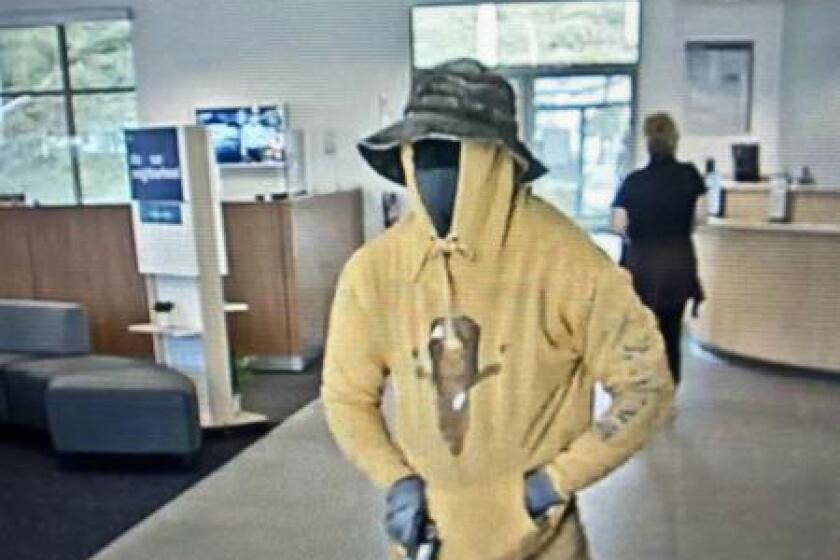Material Kids : Teaching Children the True Value of Christmas in a County Where Affluence Often Abounds
Whether they’re naughty or nice, most children growing up on the affluent side of Orange County can expect a bountiful Christmas.
And they know it. The letters sent to the North Pole from some children are so long they require extra postage--and the lists just get longer when the writers learn where the goods really come from.
It takes a special effort from parents to make sure Christmas doesn’t become a conspicuous consumption marathon, say local family counselors.
Parents may be so busy buying everything their children saw advertised on TV that they neglect to introduce their children to the spirit of giving.
“If I were to pick a place where kids are into ‘gimme, gimme, gimme,’ this would be it,” says Andrea Evans, a Newport Beach marriage, family and child therapist. “In an affluent area like this, parents don’t have much time, so they give money and gifts instead of their presence. Kids get hooked on that. They get to be junkies as far as getting, and we do them a real disservice because they miss out on the joy of giving to others.”
If Orange County youngsters find more joy in getting than giving, it may partly be a reflection of the county’s reputation for stinginess, says Mark Baldassare, a professor of social ecology at UC Irvine.
Baldassare’s 1989 Orange County Annual Survey found that the average household donates $285, or 0.6%, of its annual income to charitable causes--well below the national average of about 2%.
“Generally, in terms of giving time and money, adults in Orange County aren’t always the best role models for their children,” Baldassare says.
But setting a good example is the key to raising generous children, counselors say.
“I’ve seen kids who have everything and are lovely, nice, responsible children,” notes Barbara Pitts, a Fullerton social worker. “What matters is not what they get but what values are communicated.
“Holidays are about helping others and giving to others. Parents can take their kids out and stand with the bell for the Salvation Army. And there are plenty of places that accept donated used or new toys--you can involve children in shopping for toys and taking them to collection points. Kids really get into that.”
Sara Townsend, 8, of Westminster has acquired the values Pitts describes.
“I like giving. I feel good ‘cause I make people happy,” Sara said during a break from shopping at the Newport Harbor Art Museum.
As part of a recent holiday party for more than 200 children, the museum established a boutique where participants could purchase gifts for $1 to $5 and have them wrapped--without the help of their parents.
Sara had $7 to spend--money she’d earned working for her mom, Debbie Fertig.
Fertig, the mother of four children, waited nearby as Sara carefully selected gifts for her family. “(Sara) has a big heart,” Fertig said. “She has the real Christmas spirit with a capital S.”
Fertig noted that part of the family’s gift-giving this season would involve an outing to a park where they would share a meal with homeless people and give them clothes and toys.
“It’s so easy in Southern California to get caught up in buying and buying . . . for me, too. I try to teach my children there’s more to life than just getting,” Fertig said.
Brian Finster, 6, of Corona del Mar, said his dad had given him $7 to spent at the museum. The boy said he enjoys buying gifts for his family, but the best part of Christmas is “getting presents,” he admitted. Does he spend his own money on others? “When I’m with my dad, I use his money. When I’m with my mom, I use her money,” he said.
Buck Johns, a businessman and Republican activist who lives in Santa Ana Heights, said each of his four children had been given $10 to spend. But they will have to work for the money, said Beth Johns, 14, who was with her three younger brothers. Reed Johns, 11, said he makes most of his Christmas gifts because “people like ‘em better when you make ‘em.”
Helping children make gifts is a good opportunity for parents to “spend some quality time with them,” Evans says. “During the holidays, it’s so important to think of the things you can do together as a family. Otherwise, kids end up thinking of the holidays as a time of getting material things. Whenever possible, change the focus to time spent together.”
Children should be introduced to the idea of giving as early as possible, says Evans, whose triplets are now 16. “From the time they could barely walk, I had them picking out things for each other. That’s healthy because then they really think about others, not just themselves.
“I think it’s important for their own self-esteem that they feel they have something to offer and their opinion counts in picking out presents for relatives.”
Evans also believes it’s important for children to spend their own money on the gifts they buy.
“As soon as they are getting some sort of allowance, they should be expected to be saving a little or doing extra chores around the holidays. If they pick presents out and you buy it for them to give, it doesn’t have the significance it would if they’ve shared in giving the money.”
The idea of giving to charities will have more meaning for children if they can identify personally with a cause, notes Marti Monroe, a Huntington Beach marriage, family and child counselor.
“Whenever people are directly informed about how they can make a contribution, they’re much more inclined to do it than if there’s a mass appeal,” she says. “If children are given the information and the mood is set for them, they’re very responsive.”
If you’re giving food, clothing or holiday toys to the needy, take your children along and deliver your donations personally--as Fertig planned to--”so they can see the faces of the people who receive,” Monroe suggests.
When Monroe asked her graduate counseling students at Cal State Fullerton for their thoughts on how to awaken the spirit of giving in children, some shared their own family traditions. One student, for example, said her family helps someone in need instead of buying gifts for each other.
The students stressed the importance of parents accepting their children’s offerings graciously--even if they’re not quite sure what it is they’re receiving.
“If we aren’t good receivers when our children give to us, they become discouraged,” Monroe explains. “It’s unusual for parents to be skilled receivers because they tend to think the flow is all in one direction. By believing we must be always giving to our children, we don’t allow them the opportunity to give.
“If a child contributes in some way or wants to share, be willing to joyfully receive it and say, ‘It’s so great that you’re old enough now to be a generous person, too.’ ”
One of the biggest mistakes parents make in their eagerness to give to their children is overwhelming them with presents, Monroe says.
“I have a strong feeling that most children in Orange County have so many pieces of toys that they can’t keep their rooms clean, and part of this is Christmas overkill.
“If we give too much to our kids, they feel they can’t give in return.”
And if your children feel frustrated that they can’t afford to buy big-ticket items for others, remind them that what they spend isn’t as important as the time, effort and thought they put into finding or making what they give, Evans says.
Accepting the responsibility to give makes them feel a part of society, she notes.
“It prepares them for life. Relationships are based on give and take, and it’s important for them to learn that. That’s what it’s all about.”
More to Read
Sign up for Essential California
The most important California stories and recommendations in your inbox every morning.
You may occasionally receive promotional content from the Los Angeles Times.










